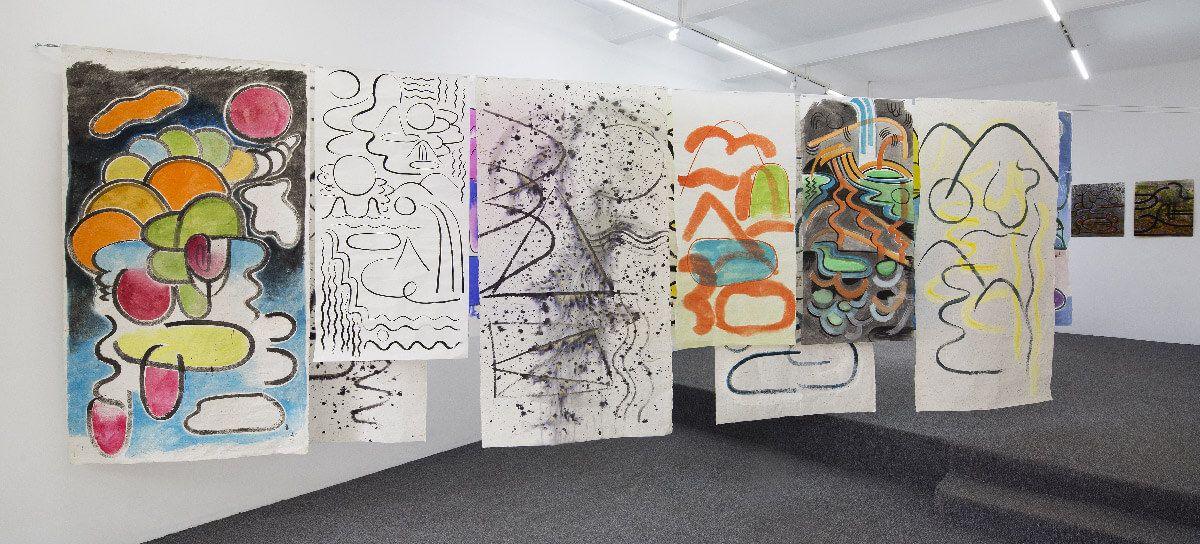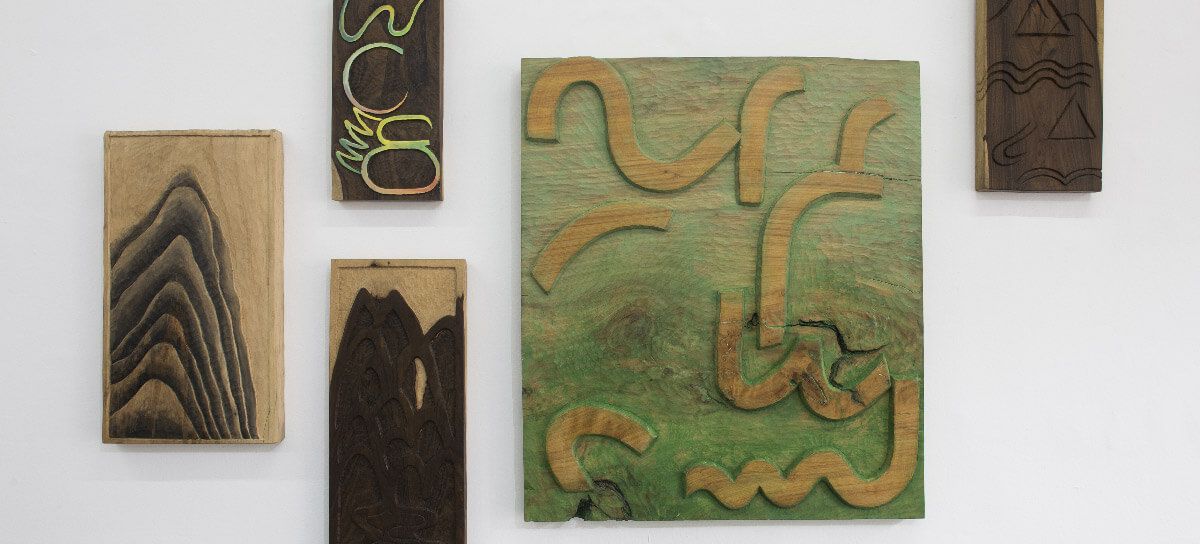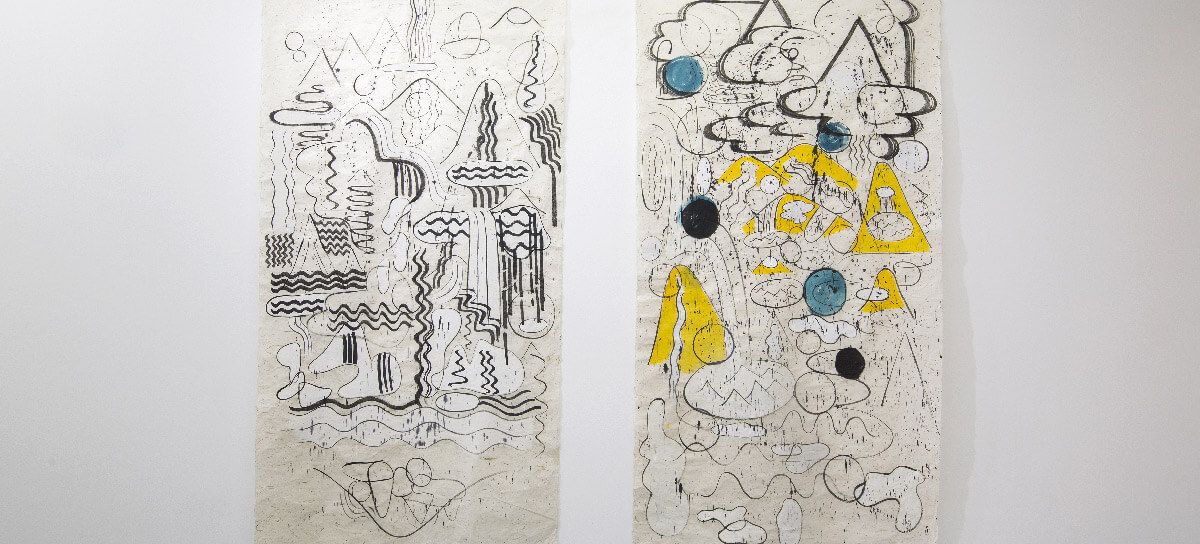Cavar estanques y amontonar montañas
Alejandra Venegas
Agosto 2019
Fundación Casa Wabi presents the third show of the Exhibition Cycle 2019 in Casa Santa María. Cavar estanques y amontonar montañas by Alejandra Venegas (Ciudad de México, 1986)
The Chinese word for landscape, shanshui means: “mountains and water”, and the common expression that refers to the action of designing a garden can be translated as: “to dig ponds, and pile up mountains”. Alejandra Venegas explores the creation of a natural environment through the simplicity of lines.
To the Ancient Chinese, mountains represented the earth’s skeleton, rivers it’s arteries, similarly, rocks in a garden constitute it’s bone structure and water, a vital pulse. The representation of infinite space within a finite terrain was the main concept for gardens, outlined by walls inside a property. Chinese landscapers found ways to cause as much confusion as possible in the visitors of gardens, where the entrance was, where were they and where was the way out, and simultaneously inspire serenity and enjoyment in which the confined space of a garden would seem to expand indefinitely.
It was meant for these gardens to be spaces for escape, dreams, freedom, and fantasy; fragments of the cosmos, privileged spaces where no seeds or crops could be found, with no summers or winters; where every point where the visitor stood on, would provide a different experience, harmonious places designed to excite the imagination.
Contemplation of nature induces a latent state of unity with it, and in this exercise, Venegas gifts us with a garden, a walkthrough where the horizon is located just ahead, and sometimes, it seems distant, where mountains and water flow indistinctly. From the abstract lines, it is possible to see this simple flow in balance with the duplicity of matter. From thin paper to carvings in wood which operate as structure, matter, and life, an unexpected route is created, one that invites contemplation. The wonder of a Chinese garden resides in its simplicity, in its disposition to be contemplated and its power to evoke through its rocks, which often resemble sculptures or abstract paintings. In the presented drawings, a close relationship between the curved and straight lines can be appreciated. The curve exists within the straight lines and vice-versa, therefore these abstract elements must coexist in harmony. Cavar estanques y amontonar montañas is part of an exercise in abstract landscape painting, observation, and movement. The drawings are more than just a representation of nature in a flat surface, they are a poetic interpretation, each with its own vital energy that invites to drift and meditate about the boundaries of the representation of nature.
The Chinese word for landscape, shanshui means: “mountains and water”, and the common expression that refers to the action of designing a garden can be translated as: “to dig ponds, and pile up mountains”. Alejandra Venegas explores the creation of a natural environment through the simplicity of lines.
To the Ancient Chinese, mountains represented the earth’s skeleton, rivers it’s arteries, similarly, rocks in a garden constitute it’s bone structure and water, a vital pulse. The representation of infinite space within a finite terrain was the main concept for gardens, outlined by walls inside a property. Chinese landscapers found ways to cause as much confusion as possible in the visitors of gardens, where the entrance was, where were they and where was the way out, and simultaneously inspire serenity and enjoyment in which the confined space of a garden would seem to expand indefinitely.
It was meant for these gardens to be spaces for escape, dreams, freedom, and fantasy; fragments of the cosmos, privileged spaces where no seeds or crops could be found, with no summers or winters; where every point where the visitor stood on, would provide a different experience, harmonious places designed to excite the imagination.
Contemplation of nature induces a latent state of unity with it, and in this exercise, Venegas gifts us with a garden, a walkthrough where the horizon is located just ahead, and sometimes, it seems distant, where mountains and water flow indistinctly. From the abstract lines, it is possible to see this simple flow in balance with the duplicity of matter. From thin paper to carvings in wood which operate as structure, matter, and life, an unexpected route is created, one that invites contemplation. The wonder of a Chinese garden resides in its simplicity, in its disposition to be contemplated and its power to evoke through its rocks, which often resemble sculptures or abstract paintings. In the presented drawings, a close relationship between the curved and straight lines can be appreciated. The curve exists within the straight lines and vice-versa, therefore these abstract elements must coexist in harmony. Cavar estanques y amontonar montañas is part of an exercise in abstract landscape painting, observation, and movement. The drawings are more than just a representation of nature in a flat surface, they are a poetic interpretation, each with its own vital energy that invites to drift and meditate about the boundaries of the representation of nature.







